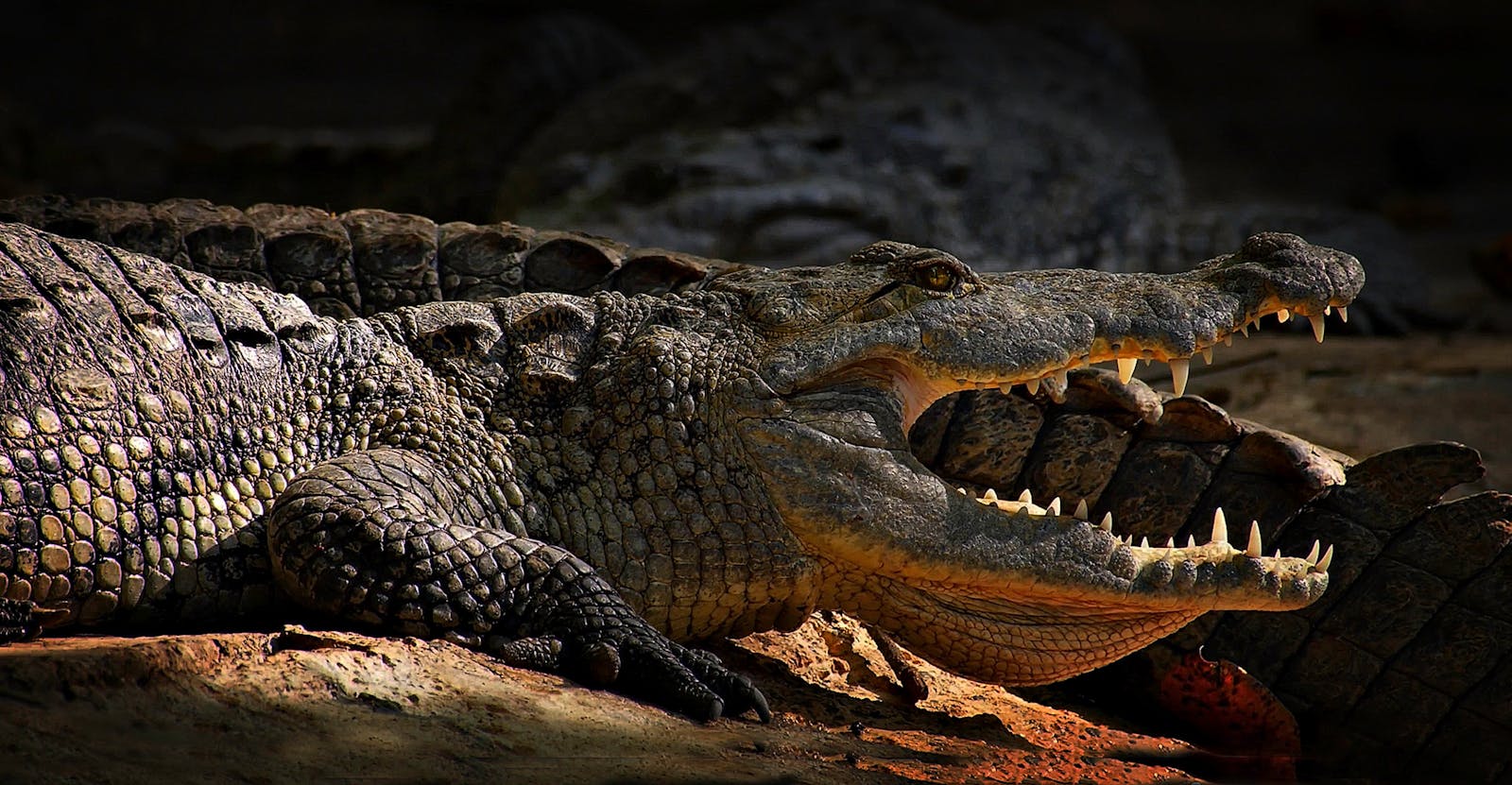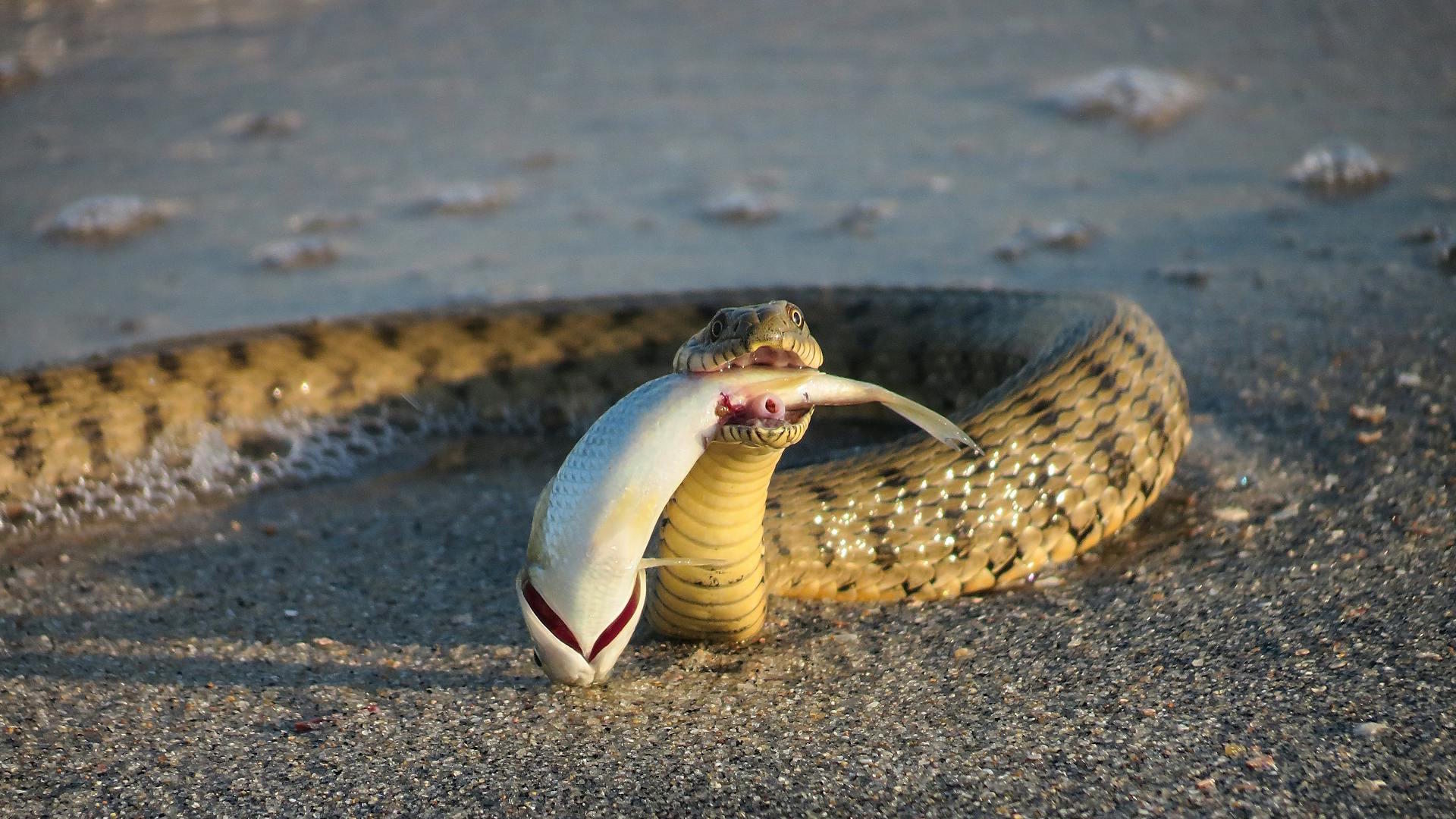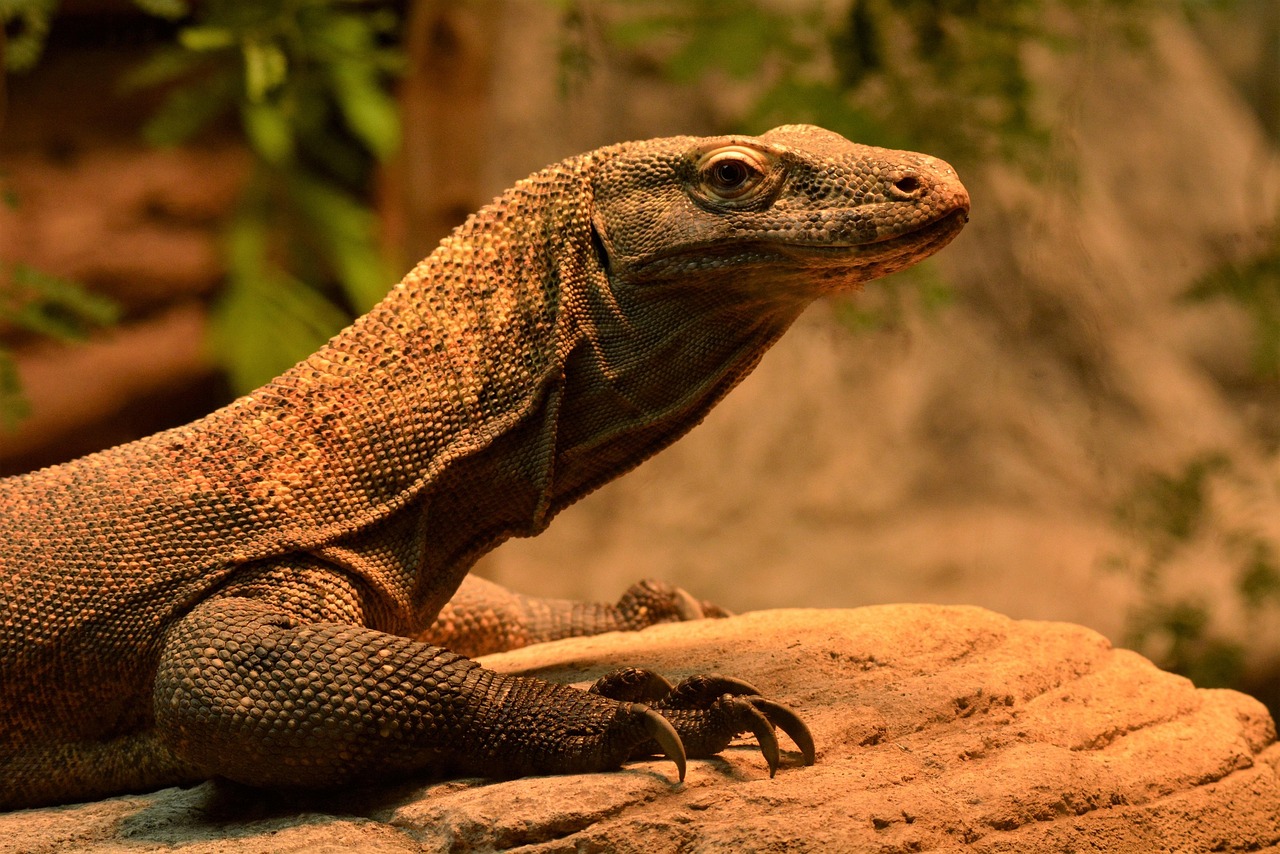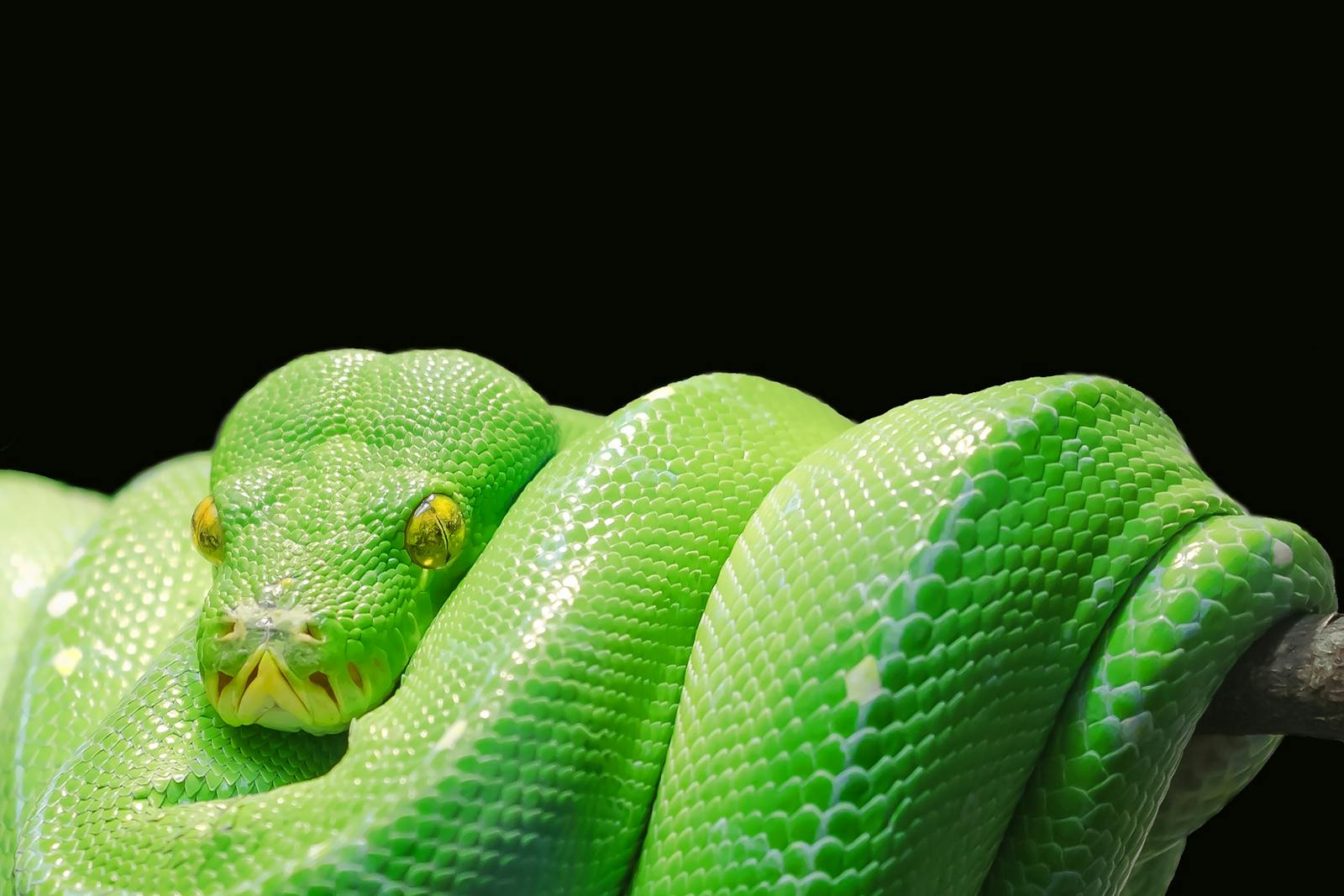The reptilian world represents one of nature’s most fascinating displays of predatory evolution. Cold-blooded and calculating, reptiles have developed hunting and killing methods that are both remarkably efficient and sometimes disturbingly brutal. From lightning-fast strikes to slow death by constriction, these ancient predators demonstrate nature’s ruthless efficiency. Their hunting methods, refined over millions of years, showcase remarkable adaptations that allow these often solitary hunters to thrive in diverse ecosystems across the planet. This exploration into reptilian hunting behaviors reveals not just their brutality, but also the fascinating evolutionary adaptations that make reptiles some of Earth’s most successful predators.
The Bone-Crushing Bite of Crocodilians
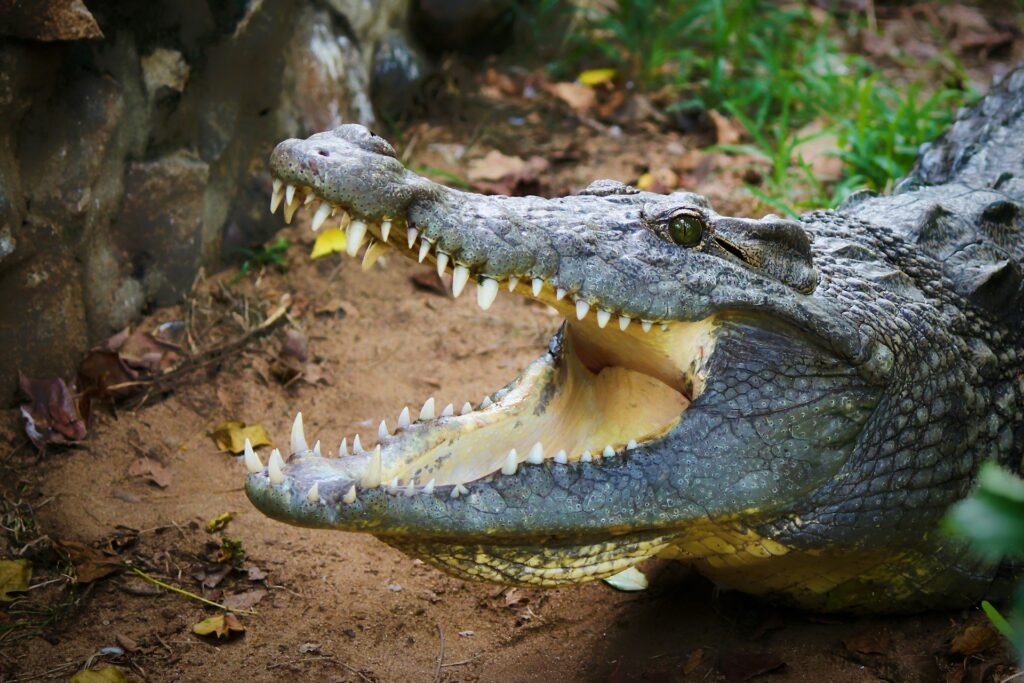
Crocodiles and alligators possess what might be the most devastating bite in the animal kingdom, with the saltwater crocodile generating up to 3,700 pounds per square inch of pressure—enough to crush a human skull like an eggshell. These ancient predators employ a hunting technique called “death roll,” where they grab prey with their massive jaws before spinning their bodies to tear off manageable chunks of flesh. What makes this method particularly brutal is that crocodilians often drag larger prey underwater, causing drowning while simultaneously dismembering the victim. Their teeth, designed not for chewing but for gripping and tearing, work in concert with powerful neck muscles that allow them to thrash prey against water or land until resistance ceases. Perhaps most disturbing is that crocodilians sometimes begin consuming their prey while it’s still alive, a reminder of nature’s unforgiving efficiency.
Constriction: The Slow Death Embrace
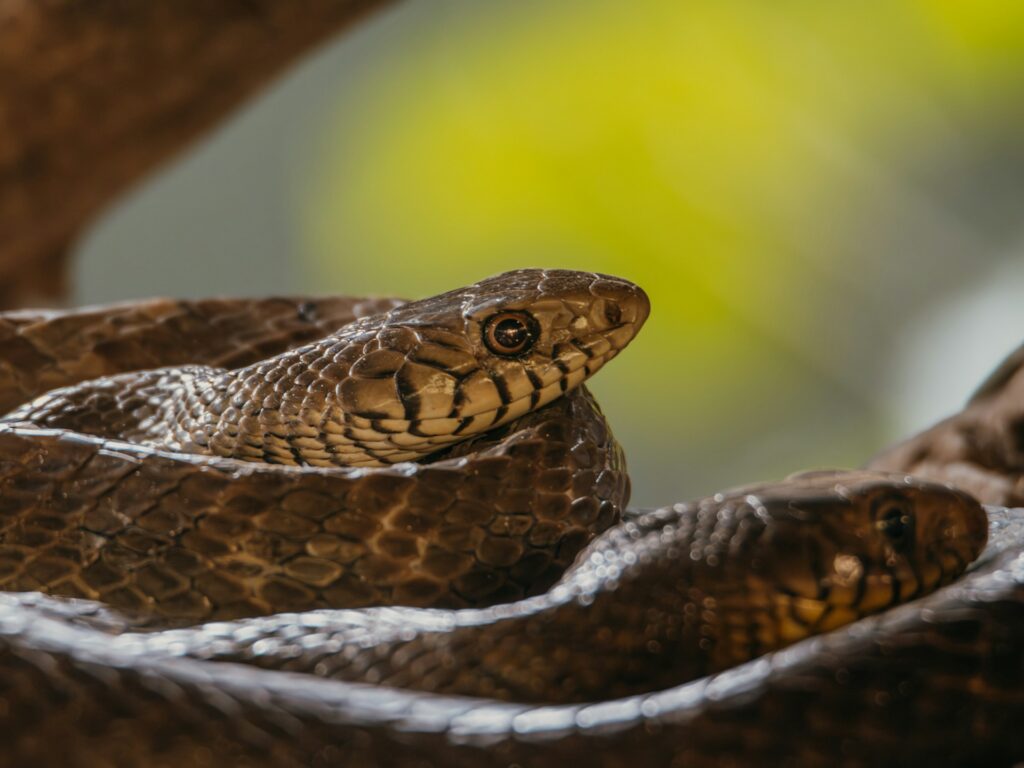
Constrictor snakes like pythons, boas, and anacondas employ a hunting method that is methodical in its brutality—squeezing their prey to death in a powerful embrace. Contrary to popular belief, these snakes don’t crush bones or suffocate their prey; instead, they apply pressure that prevents the victim’s blood from circulating properly, causing cardiac arrest. Each time the prey exhales, the snake tightens its coils, preventing the lungs from refilling and shutting down circulation to vital organs. An adult reticulated python can exert pressure exceeding 90 pounds per square inch, making escape impossible once the coils are secured. This method is particularly efficient because the snake can feel the victim’s heartbeat through its coils, only releasing and beginning to swallow once all signs of life have ceased—a process that can sometimes take hours for larger mammals.
Venom Injection Systems of Vipers
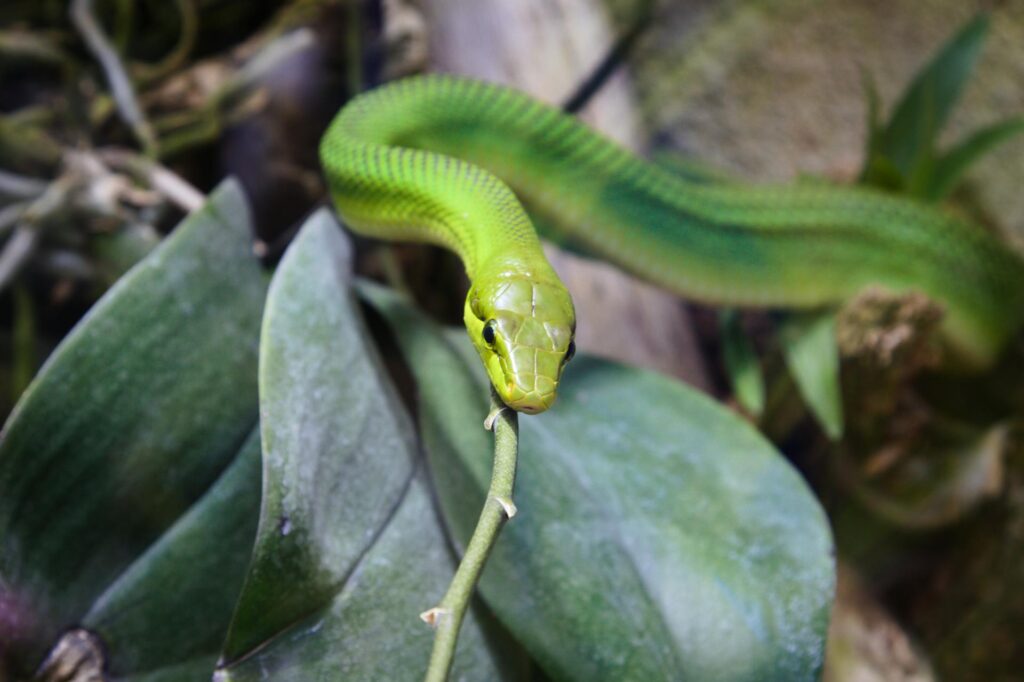
Vipers have evolved perhaps the most sophisticated weapon delivery system among reptiles—folding fangs that act like hypodermic needles. When a viper strikes, these hinged fangs swing forward from their resting position against the roof of the mouth, plunging deep into prey tissue and delivering potent venom. What makes this method particularly brutal is the composition of the venom itself, which often contains both neurotoxins that shut down nervous system function and hemotoxins that destroy blood cells and tissue. The gaboon viper, which possesses the longest fangs of any snake (up to two inches), can inject massive amounts of venom that begin digesting the prey from the inside while it’s still alive. Many vipers employ a “strike-and-release” strategy, biting prey and then tracking the dying animal by scent until it succumbs to the venom, which can involve hours of internal hemorrhaging and organ failure before death.
The Lightning-Fast Strike of the Komodo Dragon
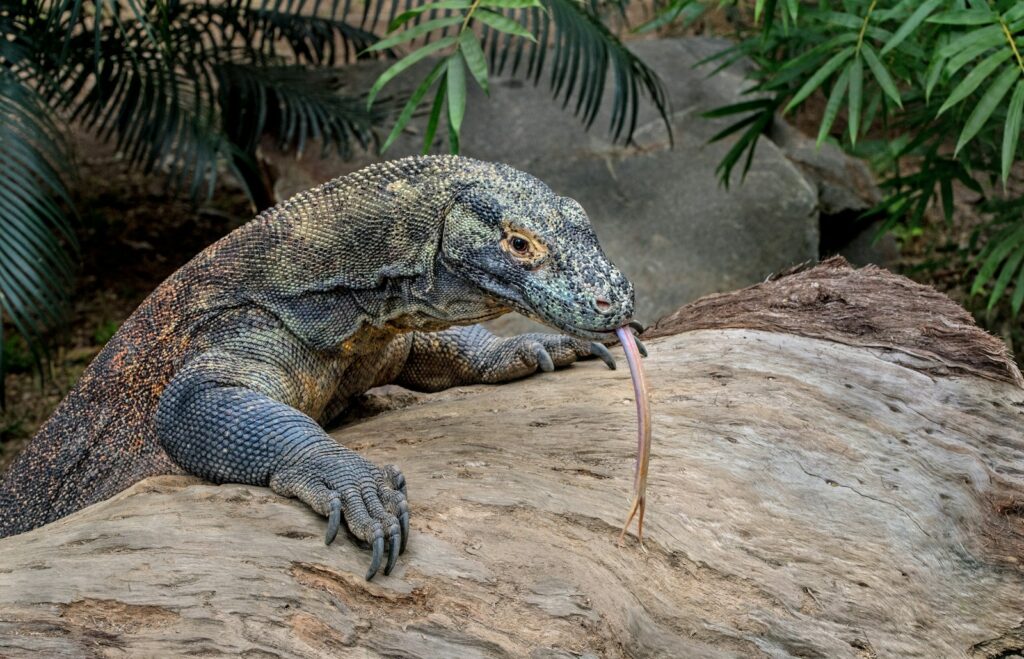
The Komodo dragon employs a hunting strategy that combines brute force with biological warfare. These massive lizards can ambush prey with surprising speed, using their serrated, shark-like teeth to tear devastating wounds that cause rapid blood loss. What makes their attack particularly brutal is the deadly bacterial cocktail in their saliva, which contains over 50 strains of bacteria along with venom glands that produce anticoagulants. After the initial attack, Komodo dragons will often back off and patiently track their wounded prey for miles, following the blood trail until the victim collapses from blood loss, shock, and infection. Research has shown that the combination of venom and bacteria can kill prey within 24 hours, during which time the victim experiences progressive weakness, fever, and internal bleeding. Perhaps most disturbing is that Komodo dragons sometimes begin feeding before their prey is completely dead, tearing large chunks of flesh from animals too weak to escape.
Ambush Tactics of Snapping Turtles
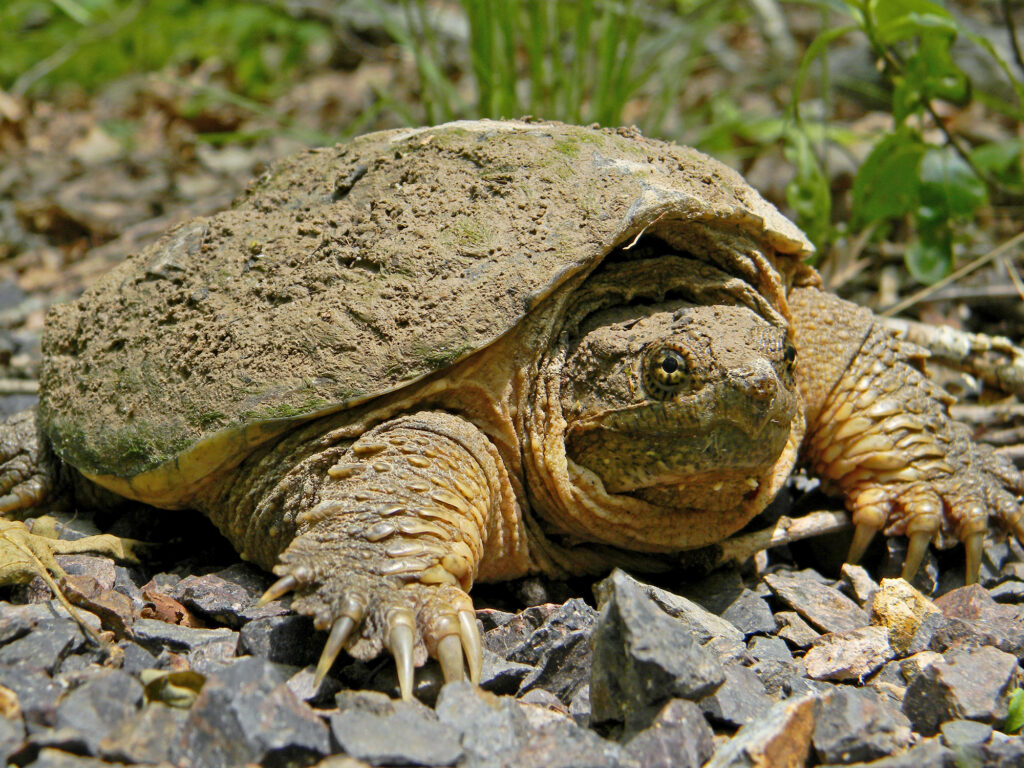
Snapping turtles represent nature’s patient killers, employing an ambush strategy that has changed little in 200 million years. These prehistoric-looking reptiles lie motionless on river or lake bottoms, often partially buried in mud with only their eyes and nostrils exposed, waiting for prey to swim within striking distance. When prey approaches, they explode into action with a neck extension so rapid it creates a vacuum pressure that helps pull prey into their powerful beaks. What makes this method brutal is the tremendous bite force—alligator snapping turtles can bite with forces exceeding 1,000 pounds, easily severing fingers, fish, or small mammals. Their specially adapted tongues, which resemble wriggling worms, serve as bait to lure curious fish directly into their deadly jaws. Once they clamp down, their hooked beaks make escape impossible, and they often swallow smaller prey whole and alive, allowing digestive acids to do the final killing.
The Deadly Precision of Spitting Cobras
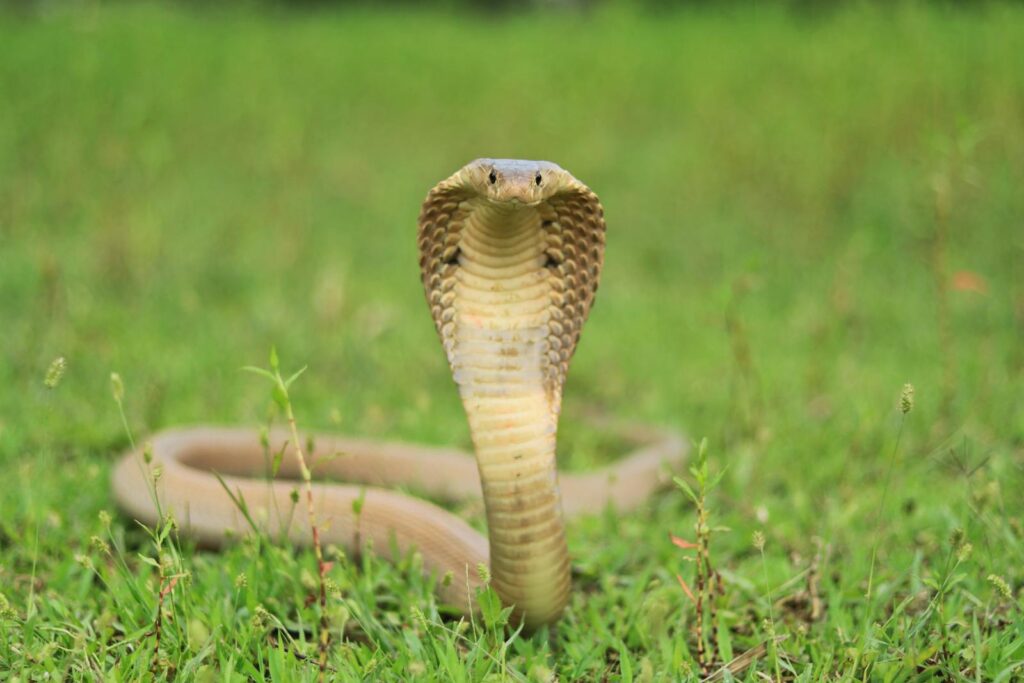
Spitting cobras have refined the art of venom delivery into a precision weapon system that can temporarily or permanently blind their victims. These snakes can accurately project their venom up to eight feet, aiming specifically for the eyes of perceived threats or potential prey. The venom is modified to cause extreme pain and inflammation upon contact with mucous membranes, creating immediate disability. What makes this hunting method particularly brutal is that once the prey is blinded and disoriented, the cobra can approach safely and deliver a lethal bite to the now-helpless victim. The psychological terror experienced by prey animals facing these cobras is evident in their defensive behaviors—many mammals actively shield their eyes when confronted by spitting cobras. For smaller prey, direct envenomation follows, with neurotoxins gradually paralyzing the respiratory system while the animal remains fully conscious until the final moments.
Pack Hunting by Nile Monitor Lizards
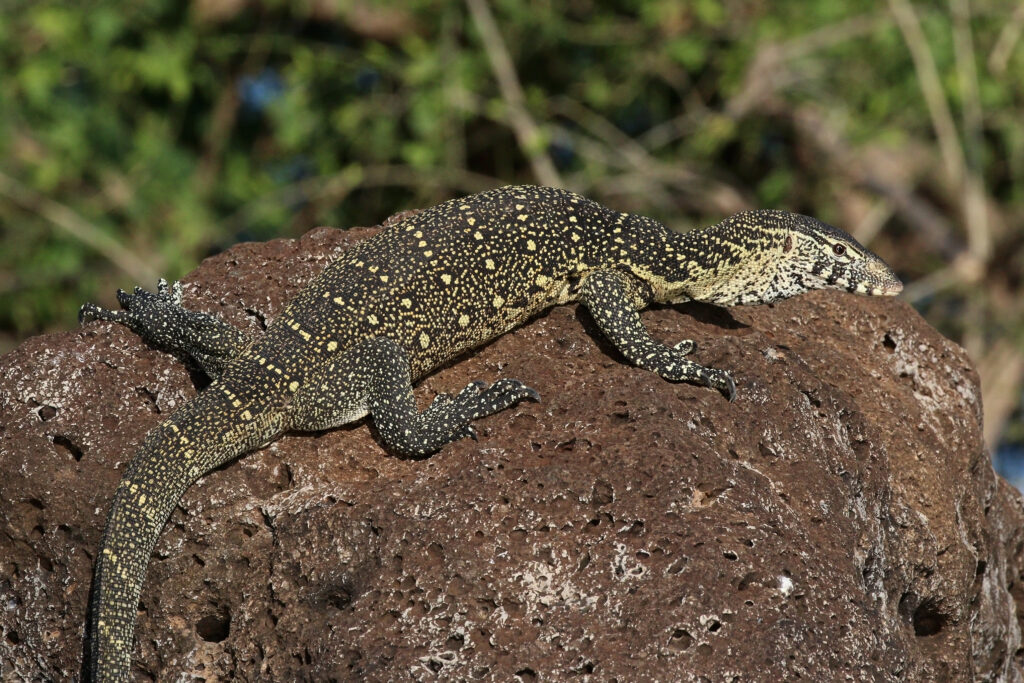
While most reptiles are solitary hunters, Nile monitors occasionally display a brutal form of cooperative hunting rarely seen in the reptile world. These large African lizards have been observed working in loose groups to raid bird colonies, with some monitors creating diversions while others snatch eggs or chicks. Their hunting method is particularly devastating because of their remarkable climbing abilities, allowing them to reach nests thought safe from predators. What makes their approach particularly ruthless is their treatment of prey—monitors have powerful jaws lined with sharp teeth and strong claws that they use to eviscerate larger prey, sometimes beginning to consume young birds while they’re still alive. Their forked tongues, highly sensitive to chemical signals, allow them to track prey through complex environments with unerring accuracy. When attacking larger prey like young crocodiles, multiple monitors may coordinate their efforts, inflicting numerous wounds until blood loss weakens the victim sufficiently for consumption.
The Chameleon’s Ballistic Tongue Attack
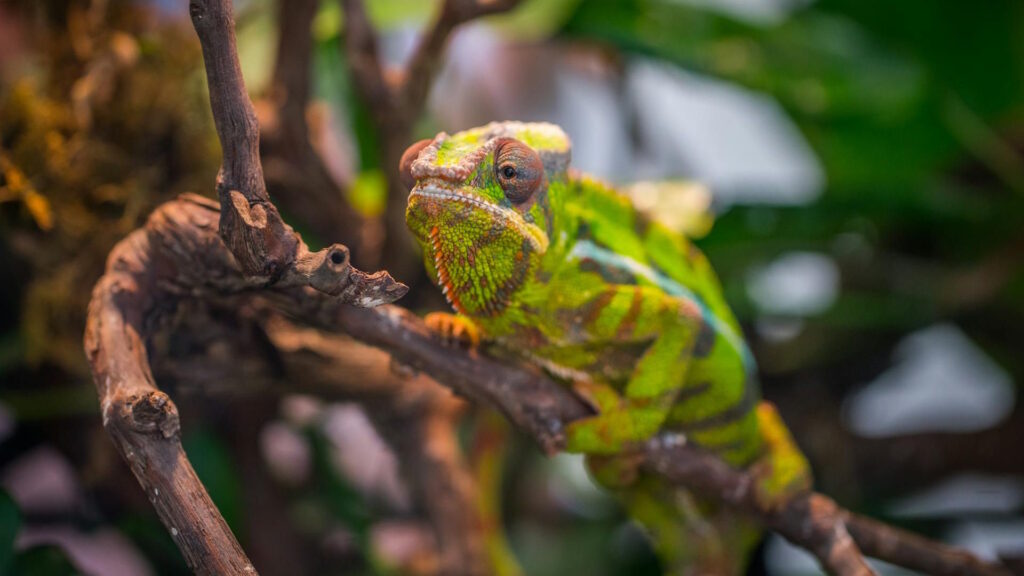
Chameleons employ what might be the most remarkable predatory adaptation in the reptile world—a specialized tongue that can accelerate from 0 to 60 mph in a mere hundredth of a second. This ballistic projectile can extend to lengths more than twice the chameleon’s body, striking prey with such force that even larger insects have no chance to react. What makes this method brutal despite its elegance is the specialized tip of the tongue, which forms a suction cup lined with muscles that actively grip the prey, while sticky saliva ensures there’s no escape. High-speed photography reveals that prey is subjected to forces exceeding 30 Gs during capture—similar to what fighter pilots experience in extreme maneuvers. The chameleon’s eyes, which can move independently and focus on prey with extreme precision, allow it to judge distance with remarkable accuracy, making its strikes nearly 100% successful on the first attempt. The caught prey, still alive, is then crushed between powerful jaws before being swallowed whole.
Death from Below: Horned Lizard Blood-Squirting Defense
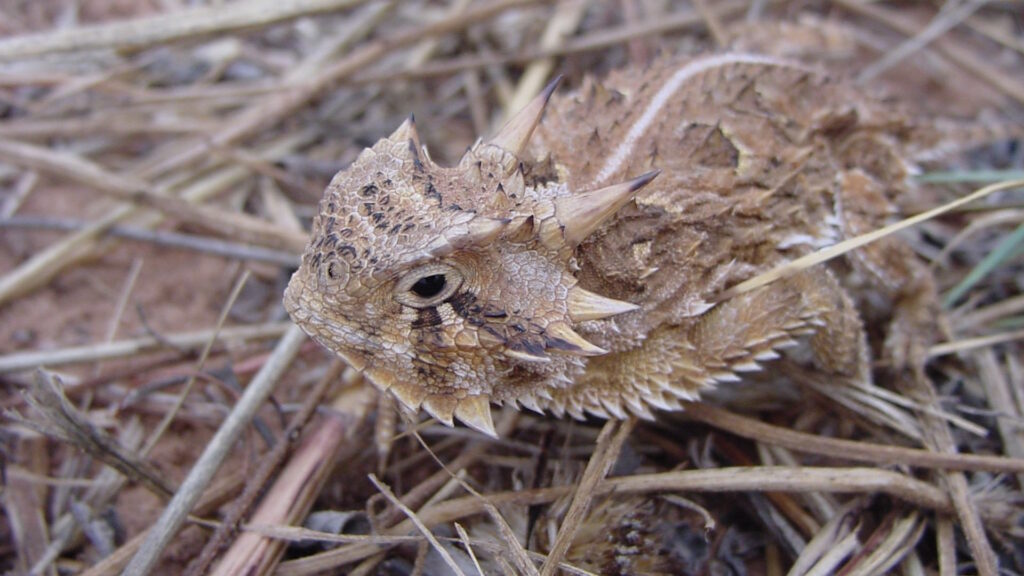
While primarily a defensive mechanism, the horned lizard’s ability to squirt blood from its eye sockets represents one of the most bizarre and brutal adaptations in the reptile world. When threatened by certain predators, particularly canids like coyotes and foxes, these desert-dwelling lizards can increase blood pressure in specialized vessels around their eyes until the vessels rupture, spraying blood up to five feet with remarkable accuracy. The blood contains chemicals specifically noxious to canine predators, causing intense discomfort and disorientation when it contacts the predator’s mouth or eyes. This defensive technique, while not strictly a hunting method, demonstrates the extreme adaptations reptiles have developed in predator-prey relationships. For smaller predators attempting to consume horned lizards, the experience of suddenly being sprayed with foul-tasting blood often creates a permanent aversion, effectively taking that predator out of the population of threats. Research suggests the compounds in the blood may have properties that specifically target canid sensory receptors, showing the remarkable evolutionary arms race between predator and prey.
The Gila Monster’s Tenacious Bite

The Gila monster, one of only two venomous lizards in the world, employs a hunting method that combines persistence with venom delivery in a uniquely brutal fashion. Unlike snakes that strike and inject venom through hollow fangs, the Gila monster has venom glands in its lower jaw that release toxins into grooved teeth through capillary action. What makes this method particularly brutal is the lizard’s bite force and tenacity—once it clamps onto prey, it often chews to work the venom deeper into the wound while refusing to let go, sometimes maintaining its grip for up to 15 minutes. Victims experience intense pain, swelling, weakness, and dropping blood pressure as the venom disrupts neuromuscular function. The Gila monster’s relatively slow metabolism means it can subsist on just a few large meals per year, making each hunt critically important and explaining the evolution of its extraordinarily determined bite. Their ability to detect prey using chemosensory organs allows them to locate animals hiding underground or in crevices, leaving few safe havens from their persistent hunting approach.
Tail Luring by Death Adders
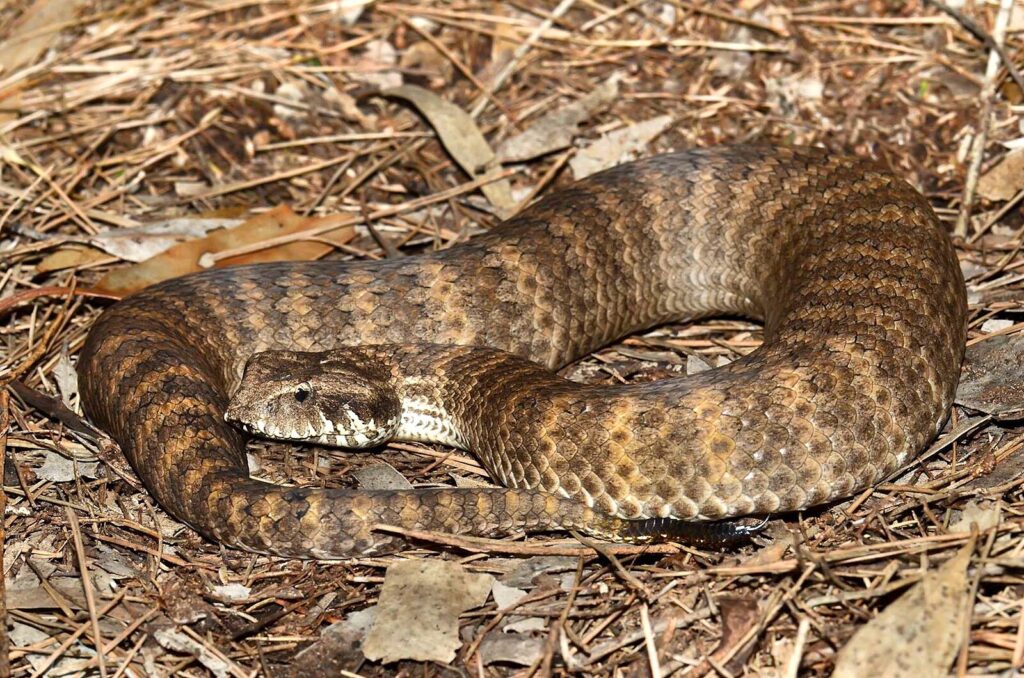
Death adders have perfected the art of aggressive mimicry with their specialized tail luring technique—a method that turns prey’s own curiosity into a death sentence. These highly venomous snakes possess a modified tail tip that remarkably resembles a wriggling worm or insect, which they twitch enticingly while their body remains perfectly camouflaged against the forest floor. Small birds, lizards, and mammals investigating this apparent easy meal instead find themselves struck with lightning speed—death adders have among the fastest strikes of any snake, with attack-to-envenomation times as quick as 0.15 seconds. Their venom contains powerful neurotoxins that cause paralysis within hours, with the snake patiently waiting nearby as its victim’s nervous system gradually shuts down. What makes this method particularly disturbing is that prey animals are often fully conscious as paralysis spreads, eventually preventing breathing while the heart continues beating. Death adders can sense the heartbeats of their dying prey through vibrations in the ground, only approaching to consume their meal once all movement has ceased.
The Marine Iguana’s Algae Harvesting Adaptations
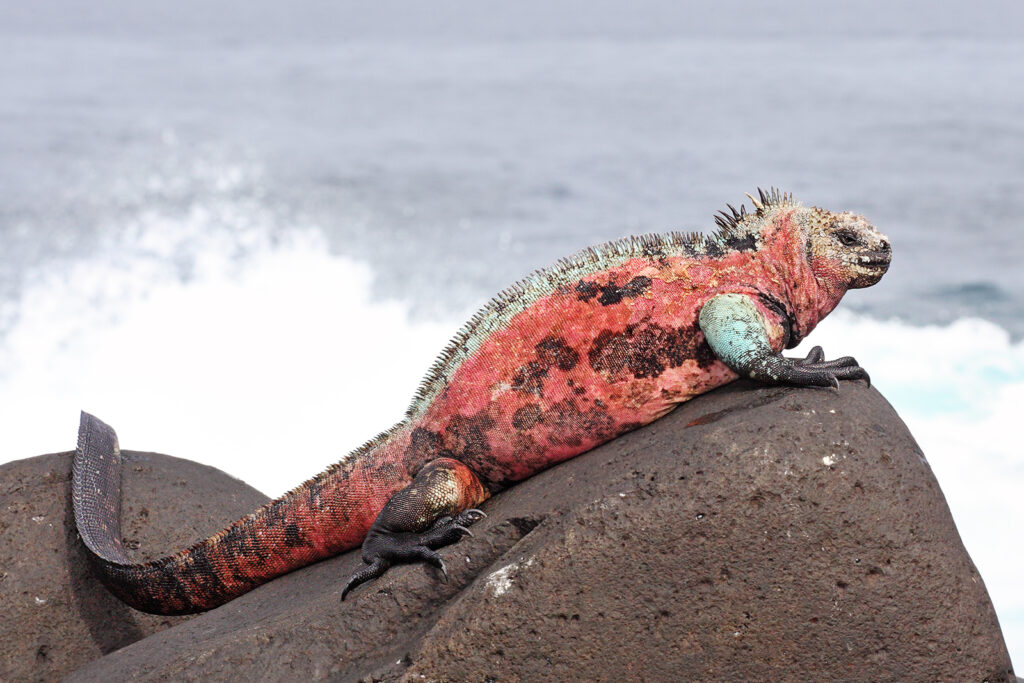
While not predatory in the traditional sense, the Galapagos marine iguana demonstrates that even herbivorous reptiles have evolved brutal efficiency when it comes to feeding. These unique lizards have adapted to harvest algae from rocky shorelines and underwater surfaces in one of the world’s harshest feeding environments. Their specialized snouts and sharp claws allow them to scrape stubborn algae from rocks while powerful salt glands filter excess salt from their bloodstream, a necessary adaptation for drinking seawater. What makes their feeding method remarkable is their physiological adaptation to the cold Pacific waters—they can slow their heart rates by up to 50% when diving, and more astonishingly, their bodies can actually shrink in length (up to 20%) during food shortages, reducing energy requirements. Their teeth, continually replaced throughout their lives, are specially adapted with tricuspid crowns that create an efficient algae-scraping surface. The marine iguana’s ability to feed in an environment inaccessible to most other land-based herbivores represents an evolutionary conquest of a niche that would be fatal to most reptiles, demonstrating that even plant-eating reptiles can develop extreme feeding adaptations.
The Great Hunt: Conclusion
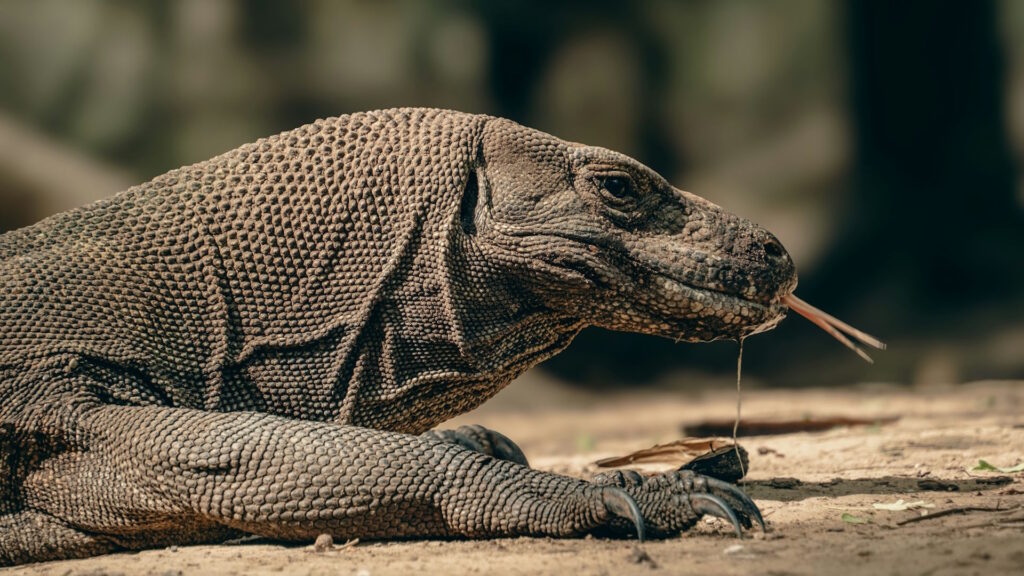
The brutal hunting methods employed by reptiles reveal nature’s uncompromising pursuit of survival through evolutionary adaptation. From the lightning-fast precision of chameleon tongues to the patient death roll of crocodilians, these ancient predators have refined killing techniques that maximize efficiency while minimizing risk to themselves. What might appear as cruelty through human eyes represents millions of years of natural selection favoring mechanisms that ensure successful feeding with minimal energy expenditure. These adaptations not only showcase the remarkable diversity of reptilian hunting strategies but also illuminate the evolutionary arms race between predator and prey that continues to shape ecosystems worldwide. As we continue to study these fascinating creatures, we gain deeper insights into the fundamental biological principles that drive adaptation and survival in our natural world—a testament to the power of evolution to create specialized solutions for the universal challenge of securing nutrition.

